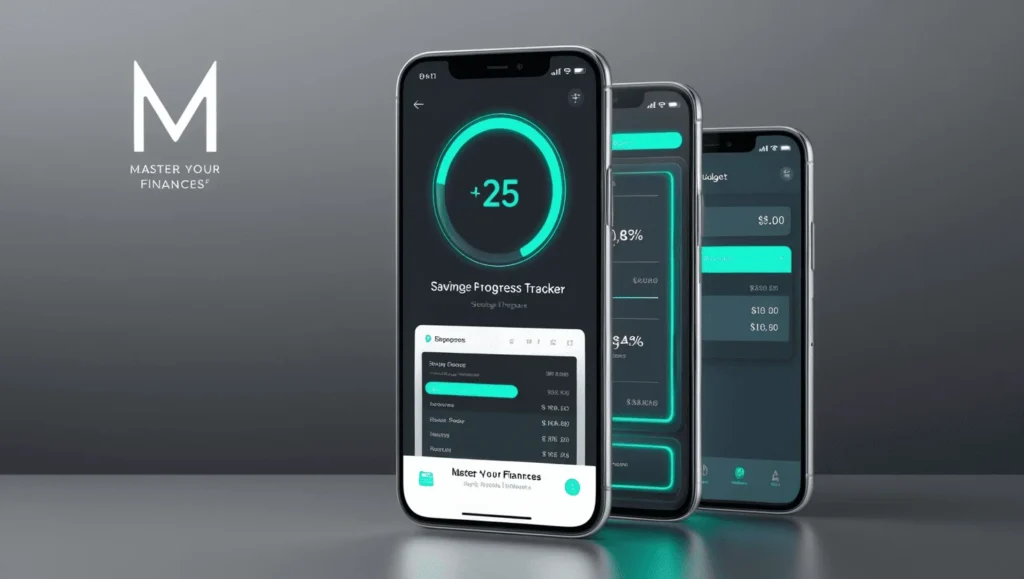Financial planning is a crucial skill for students. It helps you manage your money effectively and avoid unnecessary financial stress. Developing long-term financial goals as a student can set the foundation for future financial stability.
By starting early, you can create habits that promote independence and prepare you for life’s financial challenges. Simple steps, like saving a portion of your income or understanding student loans, can make a big difference.
Learning to budget, invest, and plan for expenses equips you to make informed decisions. These skills not only benefit your student years but also pave the way for a secure financial future.
To explore more about long-term financial goals for students, check resources like Federal Student Aid for tips on managing loans or Mint for budgeting tools.
Understanding the Basics of Financial Literacy
Why Financial Literacy Matters for Students
Financial literacy is the foundation of long-term financial success. For students, understanding how to manage money can set the stage for a secure future. Learning these skills early allows you to make informed decisions about your finances, avoiding common pitfalls like overspending or unnecessary debt.
Building a strong financial foundation as a student ensures you’re better prepared for life after graduation. Knowing how to budget, save, and invest helps you prioritize essential goals, such as creating an emergency fund or saving for future expenses. Informed decisions lead to better outcomes, giving you greater control over your financial journey.
Key Components of Financial Literacy
Effective financial management includes budgeting, saving, investing, and managing debt. Budgeting helps track income and expenses, ensuring you allocate funds wisely. Saving allows you to prepare for emergencies or future goals. Investing introduces the power of compound interest, which can significantly grow your wealth over time. Managing debt ensures you don’t become overwhelmed by student loans or credit card balances.
Using tools like Mint or YNAB simplifies financial management. These apps can help you create budgets, track expenses, and set savings goals. They are especially useful for students working toward long-term financial goals.
By focusing on these components, you can establish strong habits that support your financial well-being now and in the future.

Building a Budget and Setting Priorities
How to Create a Student-Friendly Budget
Creating a budget is an essential step in achieving long-term financial goals for students. Start by tracking all your income sources. These might include part-time jobs, internship stipends, or financial support from family. Understanding how much money you have coming in will help you make informed decisions.
Next, allocate funds to cover your primary expenses. Begin with tuition, fees, and textbooks. Then, account for daily living expenses like rent, groceries, and transportation. Consider using budgeting apps like Mint or YNAB to simplify the process and stay organized. A clear budget ensures that every dollar is accounted for, preventing unnecessary stress.
Learn more about creating a student budget here.
Prioritizing Needs Over Wants
When managing finances, it’s crucial to differentiate between needs and wants. Needs include essentials such as housing, food, and education-related costs. Wants, like dining out or entertainment, can often be scaled back to save money.
Adopt smart spending habits to achieve financial stability. For example, meal prepping instead of dining out can save you significant amounts over time. Look for student discounts, coupons, or free entertainment options to cut costs without sacrificing your quality of life.
Reducing unnecessary expenses doesn’t mean eliminating fun; it’s about finding a balance that aligns with your financial priorities. By focusing on needs over wants, you can put more money toward savings, investments, or paying off debt.
Explore tips for prioritizing your spending here.
Saving and Investing for the Future
Emergency Funds and Why They Matter
An emergency fund is essential for building long-term financial goals for students. It acts as a safety net for unexpected expenses, such as medical bills or car repairs. Having this cushion can help avoid relying on high-interest credit cards or loans.
To start, identify a manageable savings goal. For example, aim to save $500 initially, then increase this amount over time. Use a budgeting app like Mint or YNAB to track your progress. Cut back on discretionary spending, like eating out or entertainment, and redirect those savings into your emergency fund. Even setting aside $10–$20 a week can make a difference.
Introduction to Investing for Students
Investing might seem intimidating, but starting early is key to building wealth. One great option for students is a Roth IRA, which allows tax-free growth on contributions. It’s perfect for individuals with a part-time job, as contributions are based on earned income.
Compound interest is another powerful tool. By investing small amounts regularly, your money can grow significantly over time. For instance, saving $50 a month in a low-cost index fund can lead to substantial returns in 20–30 years.
Start small with platforms like Acorns or Robinhood, which make it easy for beginners. Investing now, even with limited funds, will set you on the path to achieving your long-term financial goals.

Managing Debt and Understanding Student Loans
Strategies to Minimize Student Loan Debt
Minimizing student loan debt starts with exploring available financial aid options. Scholarships and grants are excellent resources that don’t require repayment. Begin by researching opportunities through your school’s financial aid office or online scholarship platforms. Federal aid programs, such as FAFSA, provide access to low-interest loans and grants based on your financial need.
Making smart borrowing decisions is another essential strategy. Only borrow what you truly need to cover educational costs. Use a budgeting tool to determine the exact amount required for tuition, books, and living expenses. Avoid taking out loans to cover discretionary spending. This approach helps reduce debt and aligns with your long-term financial goals as a student.
Learn more about federal financial aid programs here.
Paying Off Loans Efficiently
Once you graduate, understanding your repayment options can save you money and stress. Familiarize yourself with different repayment plans, such as income-driven or standard repayment options. Knowing the interest rates on your loans can also help you prioritize payments for high-interest loans first.
Accelerating debt repayment post-graduation is another effective method. Consider making extra payments when possible to reduce the principal balance and interest accrued. If you secure a full-time job, allocate a portion of your budget to paying off loans faster. This strategy can help you achieve financial independence sooner and focus on other long-term financial goals.

Planning for Long-Term Goals Beyond College
Establishing Financial Independence
Transitioning from student life to financial independence is an essential step in achieving long-term financial goals for students. Begin by understanding your income and expenses. Track every dollar to gain a clear picture of your financial situation. This habit builds awareness and accountability.
Next, focus on creating a sustainable budget. Include savings, living expenses, and any debt repayments. Prioritize building an emergency fund to cover unexpected costs like medical bills or car repairs. An emergency fund acts as a financial safety net, reducing stress and helping you avoid high-interest credit card debt.
Another critical aspect is building your credit. Start with a student credit card or a secured credit card if needed. Use it responsibly by keeping balances low and paying them off in full each month. Building credit early helps improve your credit score, which can lead to better interest rates for future loans, including mortgages or auto loans. For detailed guidance, visit resources like MyFICO.
Retirement Planning as a Student
It’s never too early to start thinking about retirement. As a student, you might believe it’s a distant concern, but beginning now gives your investments more time to grow through compound interest.
Consider opening a Roth IRA. This retirement account allows you to contribute after-tax dollars, and your investments grow tax-free. Later, during retirement, withdrawals are also tax-free, making it a powerful tool for long-term wealth building. Even small contributions during college can make a significant difference over time. Learn more about Roth IRAs at Investopedia.
Another option is to start a 529 savings plan, especially if you plan to pursue further education or want to save for a family’s future education costs. These plans offer tax advantages and flexibility for educational expenses. They’re an excellent way to invest in your long-term goals while reducing potential financial burdens later.
Conclusion
This post has covered essential steps for students to set and achieve long-term financial goals. From understanding financial literacy to building a budget, saving for emergencies, and planning for retirement, every action contributes to a stable financial future. Students can start small by tracking their spending, creating a realistic budget, and exploring opportunities like scholarships or part-time jobs to minimize debt. These simple habits lay the groundwork for long-term success.
Take charge of your financial journey today by setting clear goals and sticking to them. Even small, consistent steps can make a significant impact over time. Ready to share your insights? Leave a comment below with your financial goals or tips for success.
For more tips on financial literacy, check out this guide to budgeting for students or learn about smart investing strategies for young adults.










1 thought on “Creating a Plan for Long Term Financial Goals for Students”